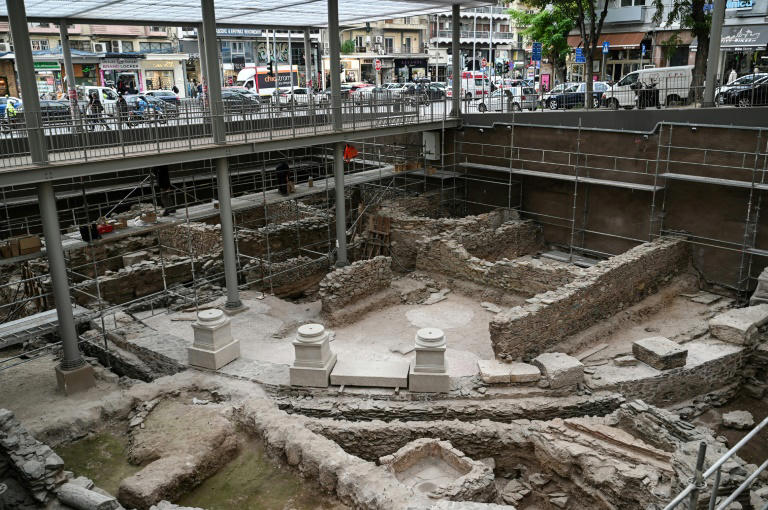The construction of Thessaloniki’s metro system has inadvertently led to one of Greece’s largest archaeological discoveries, with over 300,000 artifacts unearthed to date. Spanning the Hellenistic, Roman, and Byzantine periods, these findings provide an unparalleled window into the city’s rich history and cultural evolution. This monumental excavation effort highlights Thessaloniki’s significance as a historical hub of commerce, culture, and innovation.

A Journey Through Time: Key Discoveries
Among the most notable findings are:
- Ancient Streets and Infrastructure
The Venizelou and Aghia Sofia stations revealed remarkably preserved ancient streets, including a Roman-era marble-paved road, which functioned as the city’s main thoroughfare (the decumanus maximus) for centuries. Accompanying shops and public buildings suggest a bustling urban environment. - Cemeteries and Settlements
Near the Fleming station, a Roman cemetery was discovered, offering new insights into burial practices and settlement patterns on Thessaloniki’s outskirts during the 2nd to 4th centuries CE. The artifacts recovered include intricately designed tombs, inscriptions, and funerary offerings.

- Marketplaces and Daily Life Artifacts
Excavations also unearthed evidence of ancient marketplaces, including pottery, tools, and coins. These items paint a vivid picture of everyday life, trade, and the city’s economic prosperity during its peak. - Architectural Marvels
Fragments of early Christian churches and Byzantine mosaics were also uncovered, showcasing the city’s transition into a prominent center of early Christianity.
Preservation and Integration
To honor these discoveries, six metro stations will be transformed into cultural exhibition spaces, allowing commuters to witness Thessaloniki’s ancient legacy. Additionally, two dedicated museums are being planned to house and display a selection of these artifacts, ensuring their preservation for future generations. This innovative approach seamlessly blends the ancient and modern, underscoring Thessaloniki’s enduring historical importance.

Historical Significance
Thessaloniki’s strategic location along key trade routes made it a melting pot of cultures and a vital node in the Roman and Byzantine Empires. The metro excavations not only affirm this historical prominence but also reveal the city’s resilience and adaptability through various eras of transformation and conflict.

A Testament to Archaeological Ingenuity
This massive undertaking exemplifies how modern urban development can coexist with heritage preservation. By integrating these discoveries into the metro infrastructure, Thessaloniki offers a living museum experience, celebrating its past while embracing the future.

Conclusion
The unearthed artifacts serve as a bridge between ancient and contemporary Thessaloniki, enriching our understanding of its storied past. As construction continues, the project is expected to yield even more treasures, further cementing the city’s status as one of the most archaeologically significant sites in the Mediterranean.

